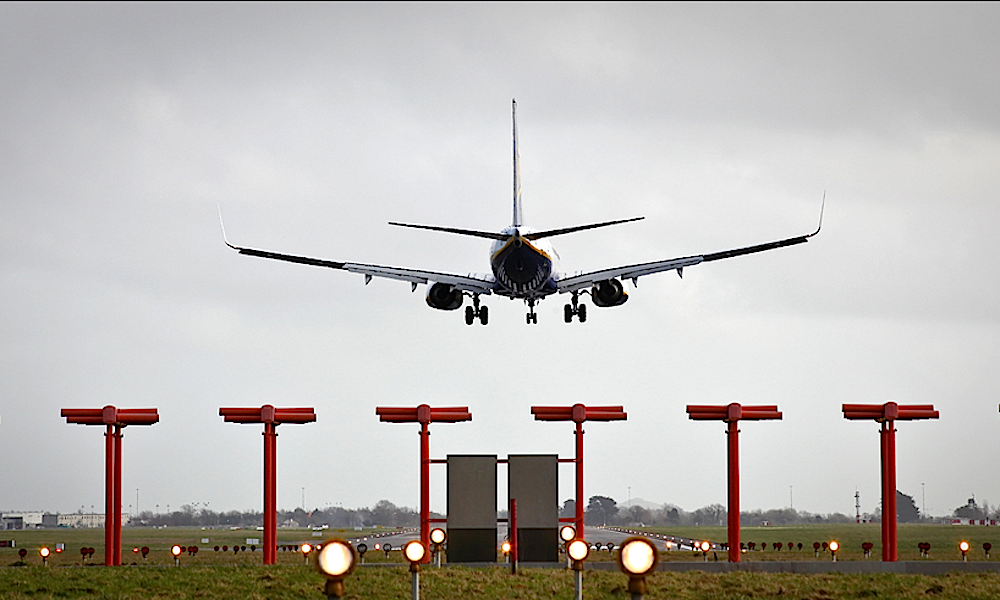
Figures just released by Airports Council International Europe shows that Dublin Airport was the fastest growing major airport (Group 1) in Europe in August; ahead of Amsterdam Schiphol, Barcelona, Copenhagen, and London Gatwick.
Passenger traffic across the European airport network in August reported an average increase of just +2.0% – the weakest monthly performance in three years.
This slowdown in growth, which started last April, is entirely attributable to a -6.2% drop in passenger traffic in the non-EU market. This is mainly due to airports in Turkey experiencing a dramatic fall in demand (-14.9%) in the wake of the failed coup last July, followed to a lesser extent by Russian airports (-5.5%). However, Iceland continued to stand apart not just from other non-EU market airports but from all European markets, with Keflavik airport registering stellar growth (+35.4%).
Conversely, passenger traffic at EU airports remained fairly dynamic at +4.5%.
However, part of this performance is attributable to demand shifting from Turkey to other Southern and Eastern European States – giving a boost to many airports serving prime leisure destinations in countries such as Bulgaria, Croatia, Cyprus, Portugal and Spain. These include: Larnaca (+21%), Tenerife-South (+20.7%), Varna (+17.3%), Bourgas (+17.2%), Gran Canaria (+14.7%), Alicante (+14.8%), Faro (+14.2%), Valencia (+13.7%), Split (+12.9%) and Dubrovnik (+12.8%).
The EU market also showed significant variations in performance. Airports in the core economies of France and Germany barely grew due to terrorism threats taking a toll on demand – while growth at UK airports remained slightly above the EU average. Airports in Ireland, Lithuania, Poland and Romania experienced very dynamic growth – but those in Austria, Belgium, Estonia and Slovenia generally posted traffic losses.
Among the top five European hubs, Amsterdam Schiphol was the only one seeing passenger traffic growing (+7.9%). Capacity-constrained London Heathrow was flat (+0.1%), while Paris CDG, Frankfurt and Istanbul Atatürk posted significant declines (-2.4%, -5% and -5.3% respectively).
Freight traffic across the European airport network grew by +4.5% and aircraft movements were up +2.4% across Europe – pointing to continued, albeit increasingly selective, airline capacity expansion.
Olivier Jankovec, Director General, ACI Europe, said “These latest figures for August are essentially telling us three things: 1. Geopolitical and terrorism risks are increasingly shaping traffic performance for Europe’s airports; 2. Tourism and leisure demand remains a key factor for achieving growth and resilience; 3. Low-cost carriers keep driving traffic growth, with medium-sized airports benefitting the most.”
During the month of August, airports welcoming more than 25 million passengers per year (Group 1), airports welcoming between 10 and 25 million passengers (Group 2), airports welcoming between 5 and 10 million passengers (Group 3) and airports welcoming less than 5 million passengers per year (Group 4) reported an average adjustment -1.7%, +4.9%, +8.2% and +2.1%.
The airports that reported the highest increases in passenger traffic during August 2016 (compared with August 2015) are as follows:
GROUP 1:
Dublin (+9.0%), Amsterdam (+7.9%), Barcelona (+6.8%), Copenhagen (+6.6%), London Gatwick (+5.7%)
GROUP 2:
Gran Canaria (+17.4%), Alicante and Warsaw WAW (+14.8%), Cologne-Bonn (+13.7%), Birmingham (+13.0%) and Malaga (+12.5%)
GROUP 3:
Berlin SXF (+42.7%), Larnaca (+21.0%), Tenerife TFS (+20.7%), Bucharest OTP (+17.0%) and Faro (+14.2%)
GROUP 4:
Oradea (+174.6%), Palanga (+60.9%), Kharkiv (+52.9%), Bucharest BBU (+41.0%) and Keflavik (+35.4%)
The ‘ACI Europe Airport Traffic Report – August 2016’ includes 212 airports in total, representing more than 88% of European air passenger traffic.




